Dieter Buchhart and Anna Karina Hofbauer, the two Austrian and Danish curators of the show “Oscar Kokoschka, un fauve à Vienne” at MAM Paris, are passionate. And they speak with great talent about Kokoschka’s “revolutionary” style at the time of Klimt and Schiele, the shock waves he sent to the public and the critics, who called him “Oberwidling” (savage) and the influence he would have in the 1970’s on such painters as Julian Schnabel or Markus Lüpertz. He was immensely famous in his lifetime and behaved in wild ways during the Habsburg monarchy. In 1909, he entirely shaved his head, was very innovative technically and fought for his status as an artist. Fanny Schulmann is the French co-curator who worked with them during the four years it took to put this large retrospective together. And they all agreed it was a “Long journey”, full of endless telephone calls. It is the first show of the artist ever to take place in a non German speaking country and the 75 major paintings, and many drawings, cover the six periods of his life in Vienna, Dresden, Prag, Paris, London and Montreux where he died at 93.
There are mostly portraits of famous men of the time or of women he liked, like Alma Mahler whom he was in love with until 1914. There are a number of self portraits and real portraits of animals, which he painted in London at the Regent’s park zoo where he was allowed in the morning before opening hours. The “Tigron” he painted eating a young deer, is particularly savage. It is a the rare produce of a tiger crossed with a lioness. The curator’s father used to take him as a little boy to see this particular painting in Vienna.
A strong opponent of the Nazis, he became the incarnation of “degenerate art” (Entartete Kunst) after criticizing Hitler’s movement as early as 1933 in Prag. This is where he meets his future wife, Old Palkovskà, a law student. Kokoschka was exiled in London and Cornwall from 1938 to 1946 and acquired British citizenship in 1947. He spent the war drawing posters and writing pacifistic articles. The same year, a large retrospective of his work was organized in Basel.
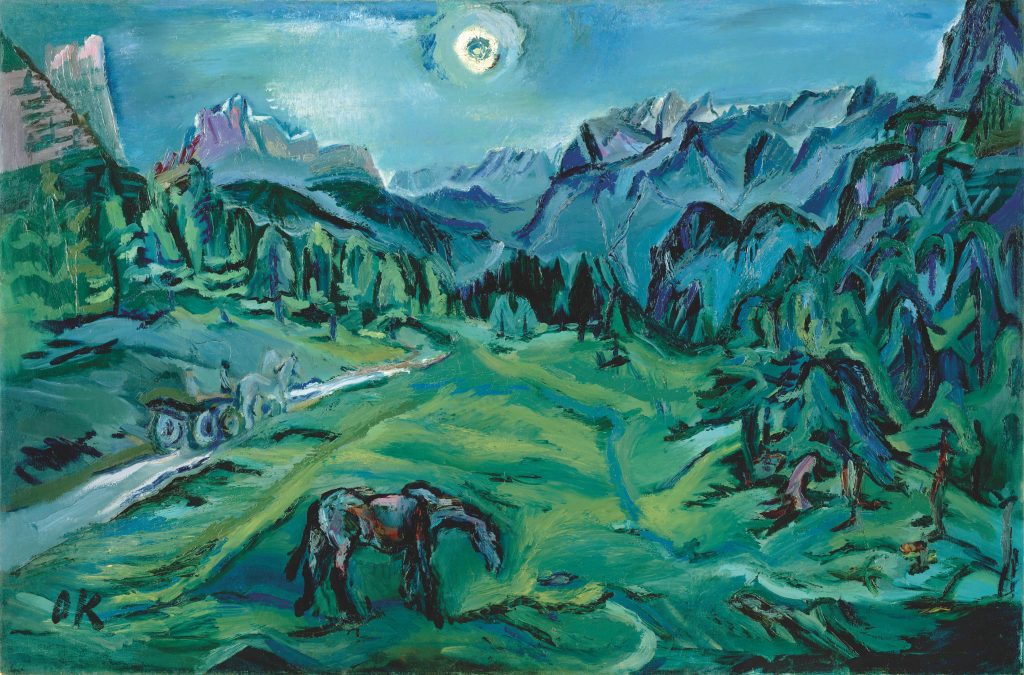
Dolomites Landscape, Tre Croci, Leopold Museum, Vienna © Fondation Oskar Kokoschka / Adagp, Paris 2022
The landscapes are more rare, an early pink view of the Alps in Mürren, in 1912, two paintings of Dresden in 1921, a view of London, two paintings of Marseille’s harbor, a beautiful view of Delphi, a superb green vision of the Dolomites and one of the lake in Annecy. His political paintings criticizing the behavior of France and Great Britain in “Anschluss-Alice in Wonderland”, in 1942, and again in “Marianne-Maquis, the Second Front” where he caricatures Churchill and General Montgomery having tea at Café de Paris.
Kokoschka’s life is rich and fascinating one and he was celebrated at MoMA as early as 1949. This led to many portraits of famous politicians such as Konrad Adenauer. He opens a school of observation in Salzburg in 1953 with a former Nazi art dealer whom he reconciliates with through this teaching. He spends the post war period trying to establish peace through his writings and paintings.
One of the last very strong self portraits is the announcement of his death in “Time, Gentlemen Please”, a reference to the closing of pubs in London. Death is awaiting him. He walks determined to confront the inevitable.
This is the first show that American director Woody Allen went to visit last week. He is in Paris to shoot a new film in French and has a special liking for Kokoschka. Do go and discover this amazing artist whom Dieter Buchhart compares for his freedom of style, modernity and rage (he signed his canvases O.K) to Jean Michel Basquiat, an artist he has curated the shows of, everywhere in the world.
Until February 12, at Musée d’Art Moderne de Paris.
Share this Post
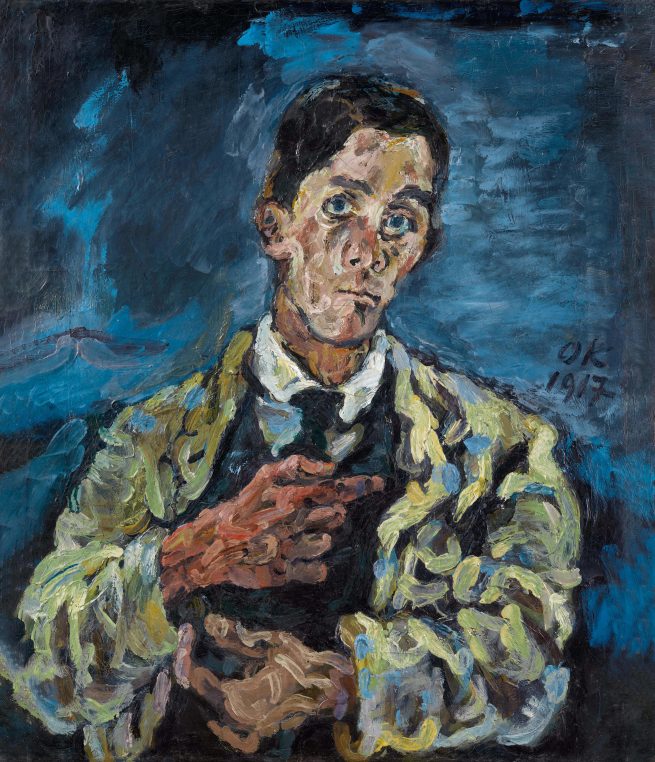

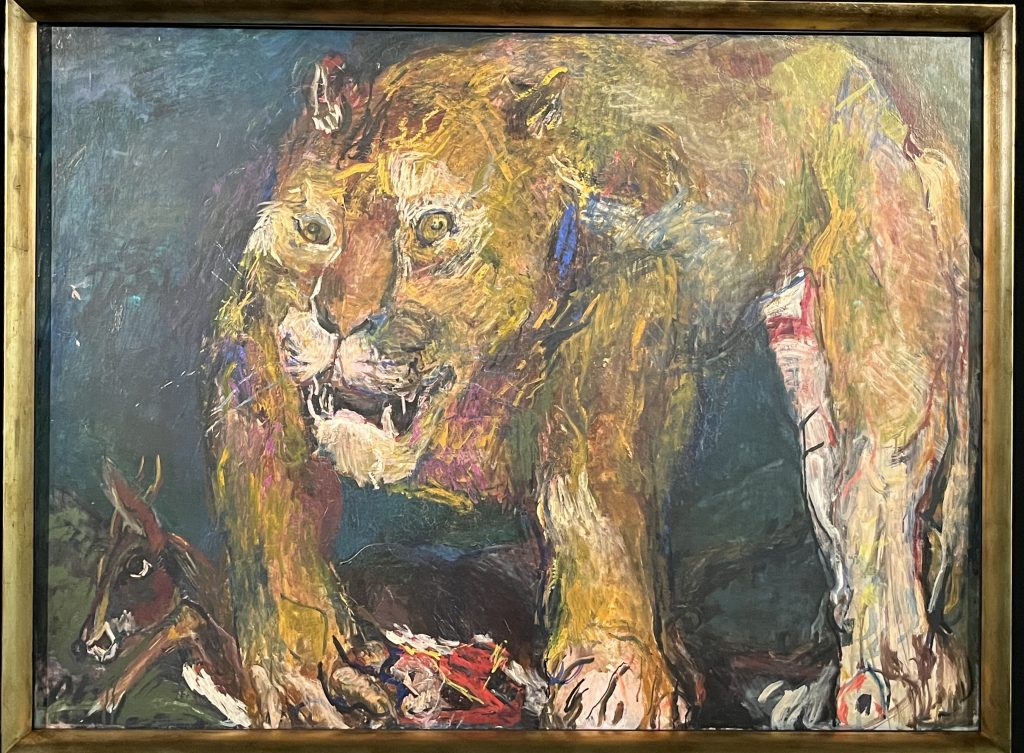

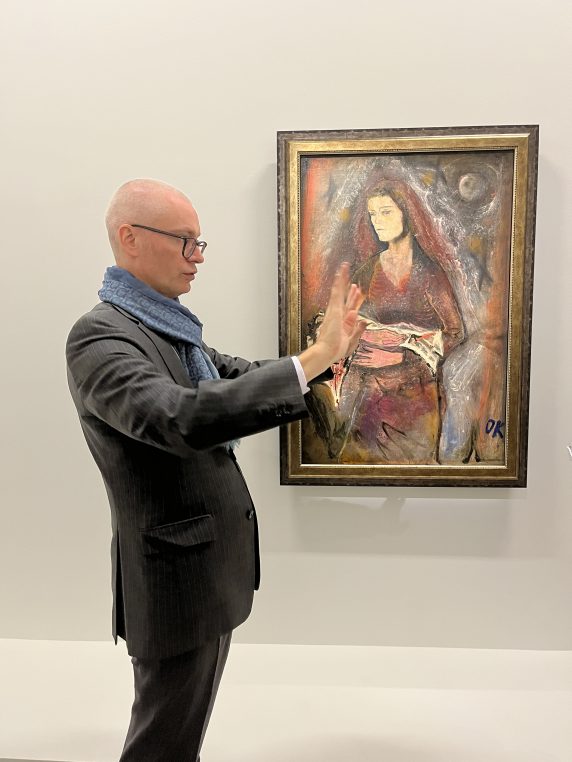
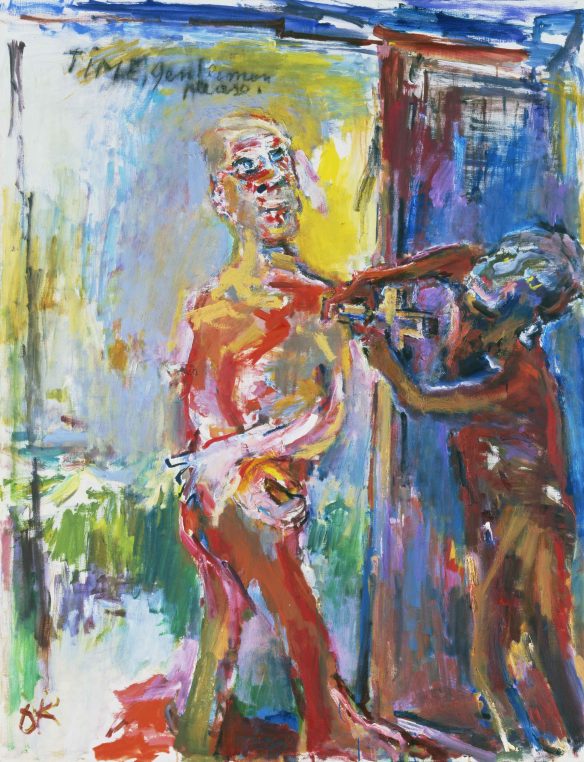

3 Comments on “Oskar Kokoschka, a precursor of Jean Michel Basquiat?”
love this, thanks
Amazing work, amazing post. And all new to me. Brava Laure!
great post on a great artist Laure